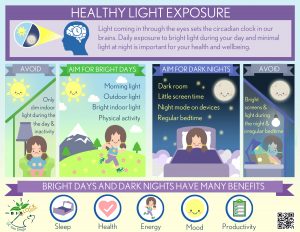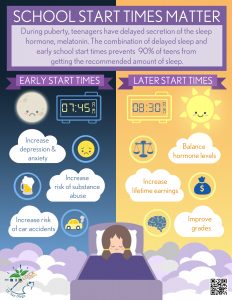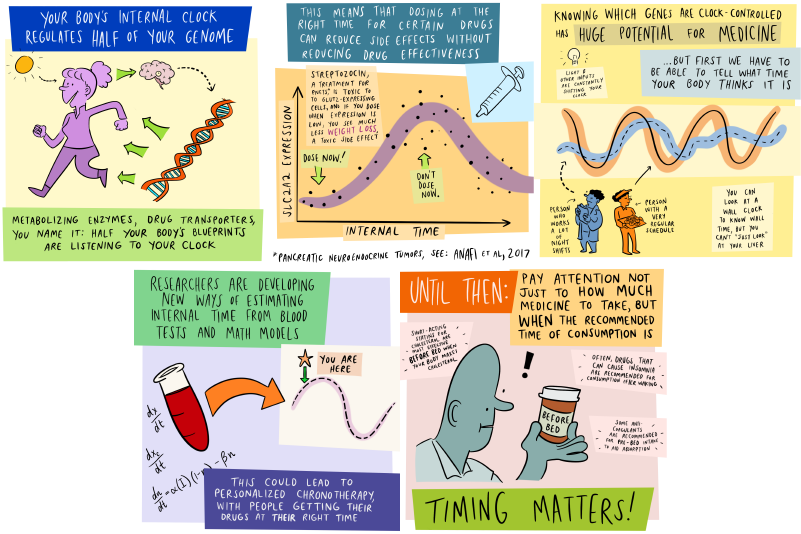Public Outreach Briefs
This page features a series of Public Outreach briefs commissioned by the SRBR and published in the Journal of Biological Rhythms in December 2019 to address topics that exemplify the social implications of the field of chronobiology. These papers were written and peer-reviewed by international experts in the field to benefit educators, clinicians, industry representatives, politicians, families, and other decision-makers. They are designed as accessible introductions to the consequences of living in a 24-hour society from a chronobiological perspective. A series of infographics were made to provide a graphical summary aimed to promote accessibility and discussion.
Light me up? Why, when, and how much light we need
by Céline Vetter, Andrew J.K. Phillips, Ana Silva, Steven W. Lockley, and Gena Glickman

Image credit: BioClock Studio. Click on the infographic to enlarge.
The Public Outreach Brief by Vetter et al. examines how different aspects of light exposure – including its timing, wavelength, and intensity – impact our circadian system, physiology, and behavior. We have evolved as a diurnal species, although urbanization and electric light accessibility have altered our day and night light exposure patterns, with previously unforeseen consequences for our quality of life and health. This paper is geared to emphasize the importance of light at all times of day, and summarizes some key light hygiene rules from a chronobiological perspective for day-working, healthy populations. Read the full paper here.
What time should middle and high school students start school?
by Gideon P. Dunster, Stephanie J. Crowley, Mary A. Carskadon, and Horacio O. de la Iglesia

Image credit: BioClock Studio. Click on the infographic to enlarge.
Teenagers are on average naturally night owls. As a result, they find their biology misaligned with the early hours of school start time. Studies around the world not only suggest but, in some cases, demonstrate that delaying school start times by 30-60 minutes results in improvements such as longer sleep duration, less tardiness and sickness, and better test scores. The Outreach Brief illustrates how chronobiological principles can be applied to design healthy school schedules. Read the full paper here.
When should you take your medicines?
by David F. Smith, Marc D. Ruben, Lauren J. Francey, Olivia J. Walch, and John B. Hogenesch

Image credit: Olivia Walch. Click on the infographic to enlarge.
This Outreach brief highlights the significance of circadian medicine, adjusting the time for drug treatments to increase desired effects, while reducing side-effects. Smith et al. review a variety of commonly used drugs that clinicians prescribe and patients consume according to time of day. The authors focus on FDA-labeled drugs to illustrate the potentially massive relevance for timing of drug dosage time in diseases. Read the full paper here.
When to Eat: The Importance of Eating Patterns in Health and Disease
by Emily N. C. Manoogian, Amandine Chaix, and Satchidananda Panda
The duration of daily eating, the precise timing of the daily eating interval, and its calorie distribution significantly affects health. This Outreach Brief describes evidence-based strategies for optimal meal timing. Restricting eating to intervals of less than 12 hours/day (during the hours of light), eating most calories in the earlier part of the day and avoiding food intake late at night appear to have significant health benefits, from better sleep to weight control. It is not (only) what you eat… but when you eat. Read the full paper here.
